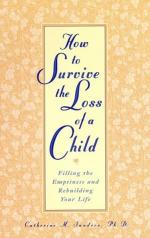|
This section contains 6,230 words (approx. 21 pages at 300 words per page) |

|
SOURCE: “King Lear and the Psychology of Dying,” in Shakespeare Quarterly, Vol. 33, No. 4, Winter, 1982, pp. 449-60.
In the following essay, which is informed by psychoanalytic theory and the writings of such twentieth-century students of death and dying as Elisabeth Kübler-Ross, Snyder reads King Lear as a representation of the process of dying. She traces the king's journey as he responds to his imminent mortality with denial, anger, bargaining, depression, and acceptance of the inevitable. She then declares that the play's final scene reflects the paradox of mortality—that it is “both unnatural and inevitable.”
Pondering “the theme of the three caskets,” certain choices-among-three in literature and legend, Freud concluded that in King Lear Shakespeare had somehow pierced through the myth's defensive disguises to its original unpalatable meaning. The right choice—the third casket, the third woman—is really death. While students of Shakespeare may well object that...
|
This section contains 6,230 words (approx. 21 pages at 300 words per page) |

|


